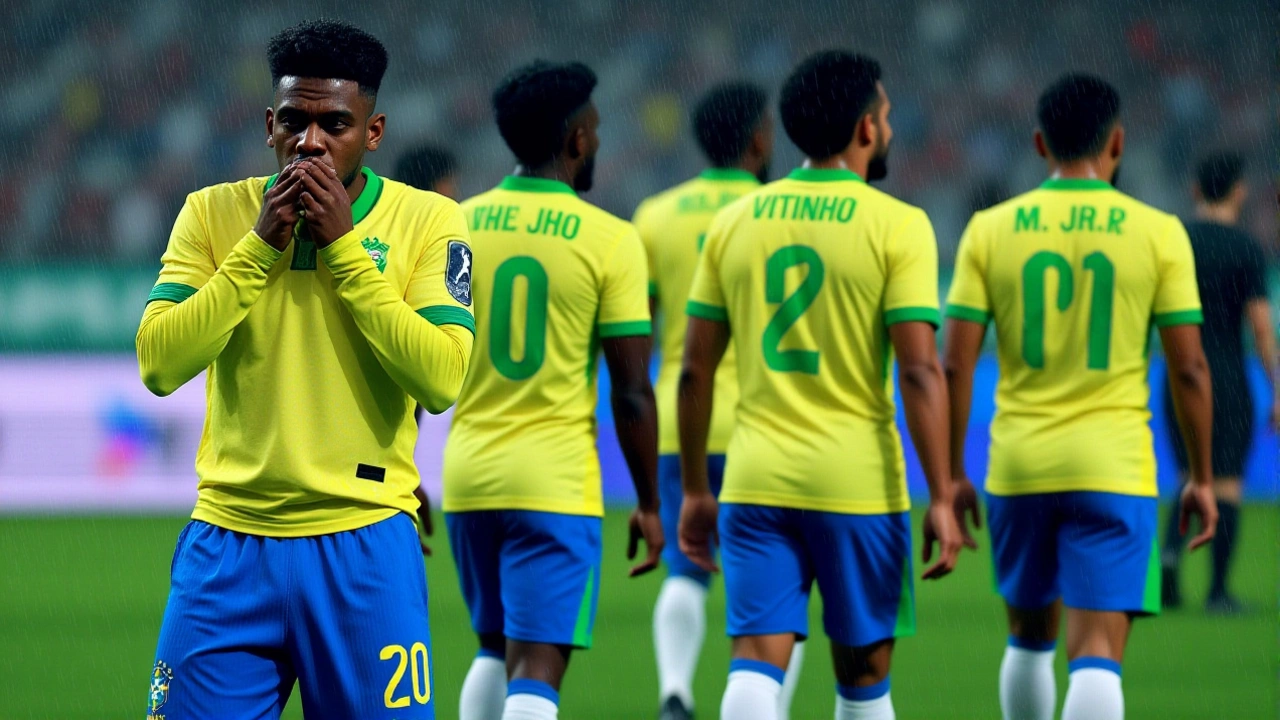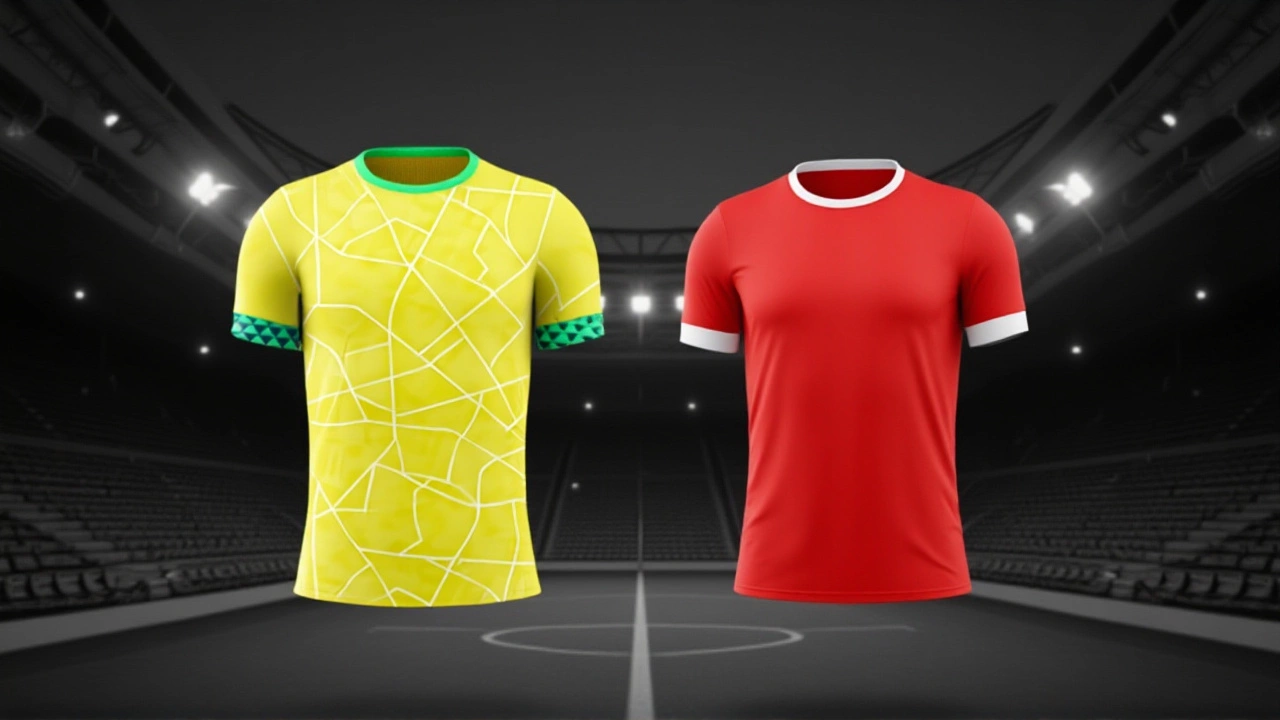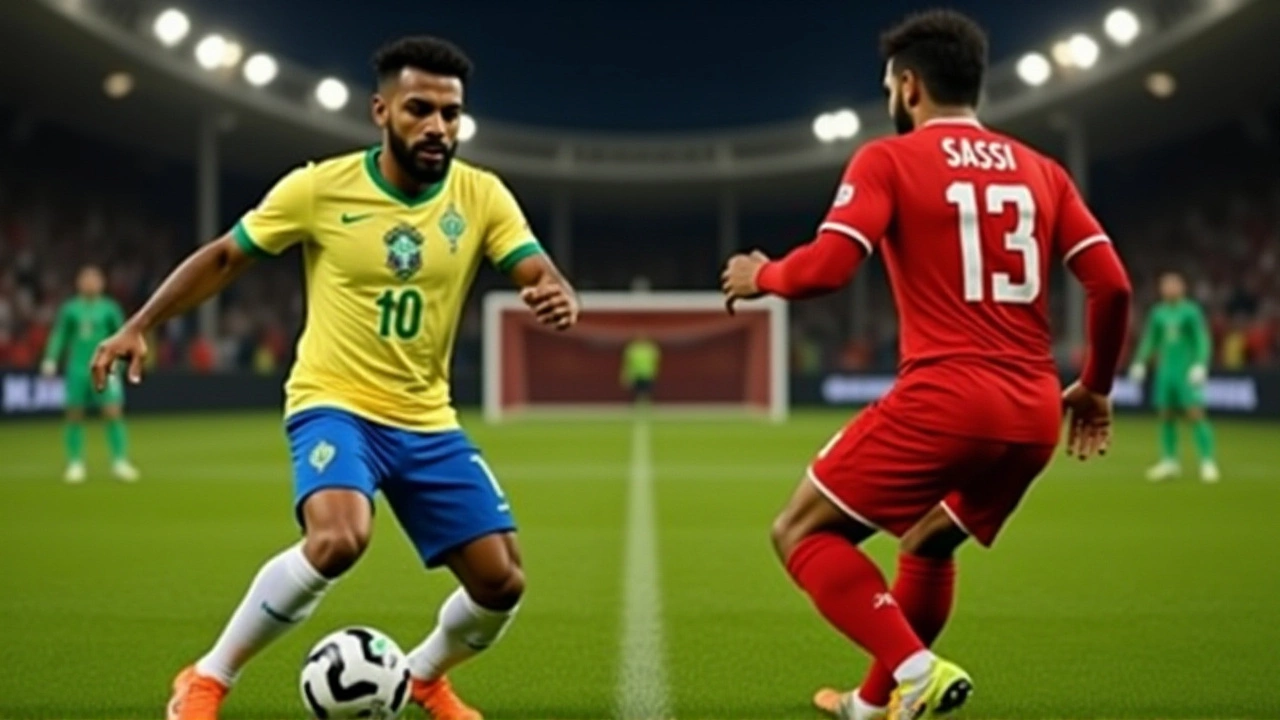Two football giants from different continents met on a chilly November night in Lille, France, and walked away with nothing but a 1-1 draw — and plenty to ponder. On , Brazil and Tunisia clashed in their third-ever international meeting, ending in a tense, hard-fought stalemate that felt more like a tactical chess match than a friendly. The match, Brazil’s final outing of 2025, wasn’t about bragging rights — it was about readiness. And on that front, both teams left with more questions than answers.
Early Shock and Late Heartbreak
It was Hazem Mastouri who stole the spotlight early. In the 23rd minute, the Tunisian midfielder unleashed a curling right-footed strike from the edge of the box that slipped past Brazil’s goalkeeper Bento — a goal so composed, it silenced the Brazilian contingent in the stands. Tunisia, often dismissed as defensively rigid, had just shown they could strike with precision. "A very well taken goal," one commentator noted. "They weren’t just sitting back. They were playing to win." Brazil responded with urgency. Just before halftime, a handball by Tunisian defender Kyle Enrique inside the box handed the Samba Boys a penalty. Enter 18-year-old Estêvão Willian, the rising star from São Paulo. With nerves of steel, he sent Bento the wrong way and leveled the score at 1-1. The stadium erupted — not just for the goal, but for what it symbolized: Brazil’s youth is no longer just hope, it’s here.Who’s Who on the Pitch
Tunisia’s lineup was a blend of experience and emerging talent. Goalkeeper Bento (not to be confused with Brazil’s namesake), defenders Wesley, Kyle Enrique, and Gabriel (Arsenal’s Gabriel Magalhães, though unconfirmed if this refers to him), and midfielders anchored by Caroline’s men — likely a misstatement referring to coach Jalel Kadri’s tactical setup — held firm. Their defensive discipline, honed through a qualifying campaign that saw them crush São Tomé and Príncipe 6-0 and Namibia 3-0, was on full display. Even when Brazil pressed, Tunisia’s backline held shape, rarely breaking. Brazil’s side was a mix of veterans and rookies. Midfield maestro Casemiro (5), playmaker Bruno Guimarães (8), and attacking spark Vinícius Júnior (7) led the charge. But the real story was Estêvão Willian — the teenager who didn’t just score, but nearly won it. In the 95th minute, after a brilliant run by Fabinho, Willian’s right-footed shot from the right flank crashed against the post. The ball ricocheted away. The crowd groaned. Tunisia’s players collapsed to their knees. Brazil’s bench buried their faces in towels. One inch. That’s all that separated a dramatic winner from a draw.
Why This Match Matters
For Tunisia, this was more than a friendly. It was a dress rehearsal for their seventh FIFA World Cup appearance — and their first real shot at advancing past the group stage. They’ve been building toward this since October, when they sealed qualification with back-to-back wins. Their coach, Jalel Kadri, has built a team that doesn’t need to dominate possession — just absorb pressure and strike on the counter. Against Brazil, they did exactly that. For Brazil, the draw was a reminder that even in friendlies, complacency is dangerous. They’ve won 10 of their last 11 matches, but the 0-0 away draw to Namibia earlier in qualifying exposed cracks. This match showed those cracks are still there — especially in the final third. The midfield was dominant, but the finishing lacked ruthlessness. Estêvão Willian’s near-miss wasn’t just bad luck — it was a sign that Brazil’s attack still needs sharpening before the World Cup.What’s Next for Both Teams
Tunisia will now focus on their World Cup group stage opponents, likely facing European powerhouses. Their confidence is high. "They’re not just here to participate," said beIN SPORTS USA analyst David S. Kuma. "They believe they can win a knockout game." Brazil, meanwhile, will take a month off before reconvening for final World Cup preparations. The spotlight will fall on whether coach Dorival Júnior can integrate younger players like Willian and Henrique (16) into the starting XI. With Vinícius Júnior and Rodrygo thriving, the future is bright — but the present still needs polish.
Final Whistle, Big Questions
The final whistle blew at 90'+5' in Lille. The scoreline was 1-1. But the real story? Two teams on very different paths, yet both heading toward the same destination: Qatar 2026.Frequently Asked Questions
How did Tunisia manage to hold Brazil to a draw despite being underdogs?
Tunisia relied on disciplined defending and quick transitions, a strategy honed during their World Cup qualifiers where they conceded just two goals in eight matches. Their backline, led by Wesley and Gabriel, absorbed pressure and cleared effectively, while Hazem Mastouri’s goal showcased their ability to punish mistakes. They didn’t need to dominate — just stay compact and strike when the chance came.
Why is Estêvão Willian considered a breakthrough player for Brazil?
At just 18, Willian scored his first international goal under pressure and came within inches of winning the match. He’s the youngest starter in Brazil’s attack since Neymar’s debut, combining pace, composure, and finishing instinct. His penalty conversion and near-post strike suggest he could become Brazil’s long-term successor to Vinícius Júnior — especially if he continues developing under Dorival Júnior’s system.
What does this result mean for Tunisia’s World Cup chances?
Beating Brazil — even in a friendly — proves Tunisia can compete with elite teams. Their defensive structure and set-piece efficiency make them dangerous in tight groups. If they avoid early losses and score one decisive goal, they have a real shot at advancing beyond the group stage for the first time since 2002, when they reached the Round of 16.
Was the penalty decision controversial?
No — referee Jérôme Pan of France made a clear call after Kyle Enrique’s arm made contact with Vinícius Júnior’s shot inside the box. Replays showed the ball struck his forearm from close range, and the VAR review confirmed the decision. Tunisia didn’t protest, suggesting they accepted the call as legitimate.
Why was this match played in Lille, France?
Lille offered a neutral, high-capacity venue with strong broadcast infrastructure, ideal for teams preparing for a World Cup in the Middle East. The climate and pitch conditions also mimic those in Qatar, making it a practical training ground. Plus, France’s large African and Brazilian diasporas ensured a passionate, diverse crowd — perfect for simulating World Cup atmosphere.
What’s the historical record between Brazil and Tunisia?
This was only their third meeting ever. Brazil won the first in 2005 (3-1) and the second in 2013 (2-0), both in friendlies. Tunisia’s only point came in this 2025 draw — their first ever against Brazil. Their previous encounters were one-sided, making this result a historic milestone for African football.
